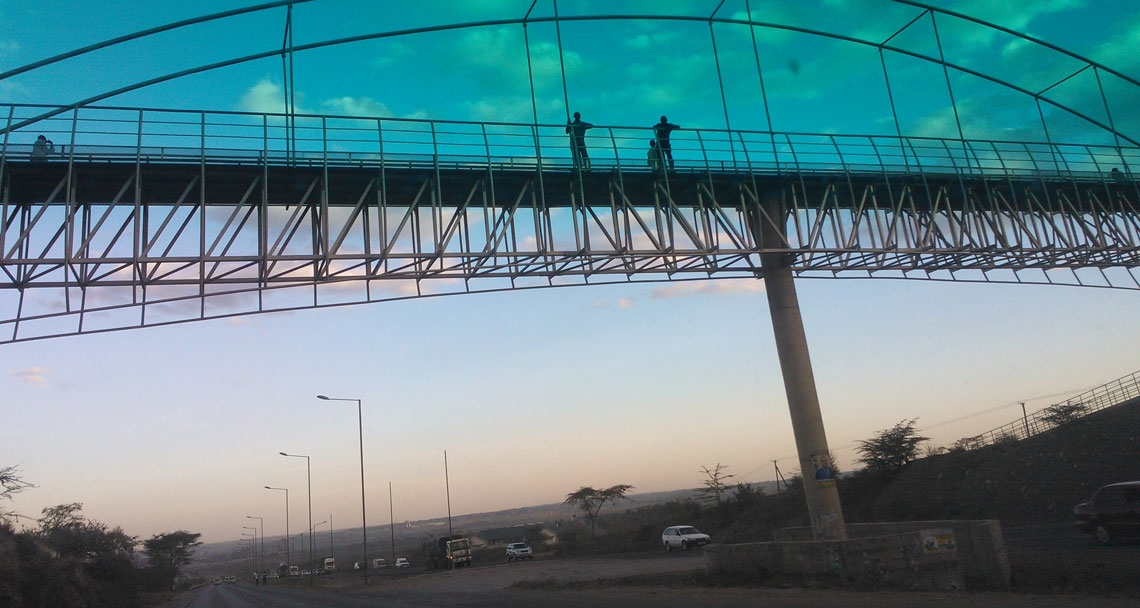An unsuccessful change in infrastructure
Recent road infrastructure in Nairobi have failed to take care of the citizens’ needs and present several new problems, according to a new PhD.
The Global South is experiencing infrastructure transformations that lead to foreseen and unforeseen effects on everyday life. Noel J.O. Okello has studied these implications on the urban process in Nairobi, Kenya. He recently defended his PhD thesis at The Oslo School of Architecture and Design.
New roads were put up in the city beginning 2006. The Government at the time said that the new infrastructure was meant to grow the economy and create positive social transformation.According to Okello, the infrastructure has not improved. One of the issues is changing behavior beside the roads.
“There is a problem with informal activity by the roads, such as political protests, sale of items, people and companies creating territories, and county authorities holding exhibitions. This even sometimes moves onto the roads. This territorial behavior was not a problem with the old roads.
“The planners and designers of the roads have not taken care of the different aspects in the metropolitan area. The new infrastructure does not solve the problems it was meant to solve. History and culture weren’t taken into account in the planning and this has caused some conflicts in the use of roads. The infrastructure should have catered to the needs of the citizens, but instead emphasis has been on the image of the country and the legacy of politicians involved in the road projects.”
Some communities are now using Nairobi’s recently transformed road space as social meeting areas, because of a lack of alternatives.
“One community is now using a new bridge as a social space, because it is the only urban place they can meet and at the same time get a panoramic view of the city. Traditional pastoralists communities living in Nairobi also use the new road as the only remaining link to places where they can sustain their culture.”
There have been several issues with the new road infrastructure, which was carried out by a Chinese construction company because the Chinese funded the project. The citizens, who are the ones that mostly use these roads, have not been included in the planning so the traffic pattern has not changed. In fact, there are more traffic congestions now than on the old roads.”
“Also, there is a massive problem with flooding as the Chinese construction company weren’t aware of the rainfall that sometimes occur. The roads turn into rivers when it rains heavily and can’t be used, said Okello.
He thinks that the reason for why the new infrastructure has failed is because of the priorities of politicians and economists.
“There are other projects that are more pressing, in my opinion. Security, lack of water, people are starving the North of the country – it seems the planners follow the development priorities of the banks and not the citizens.”
PhD: Noel J.O. Okello (2017) Our Way or the Highway? A Study of the Reframing of Transformed Road Transportation Infrastructure in the Nairobi Metropolitan Region
